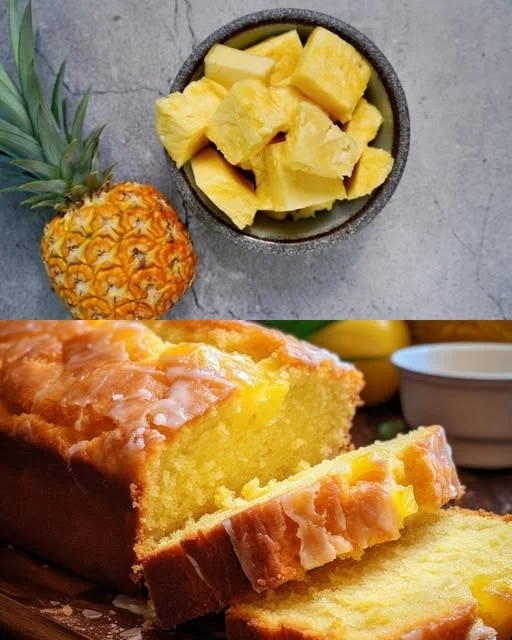Advertisement
The first time I tasted a cake that quite literally melted in my mouth, I was sitting on my grandmother’s kitchen stool, watching her carefully sift flour through an old metal strainer with a broken handle. She had this way of working in silence, humming sometimes, moving with grace like she wasn’t just baking but conducting a symphony.
The cake she pulled out of the oven that day didn’t look like much—pale golden, with a faint whisper of coconut in the air. But when I bit into it, I was stunned. It wasn’t airy like sponge cake or buttery like pound cake. It was something entirely different. Light, yes—but almost creamy. It dissolved the second it touched my tongue. I had never experienced a texture like that before.
Years later, after experimenting with alternative flours and gluten-free baking, I tried to recreate that sensation. Rice flour gave me lightness. Oat flour added softness. Cornstarch created that melting quality. And the coconut? Well, that was always there—like a whisper from the past.
This cake is an ode to those moments: quiet afternoons, warm kitchens, and simple recipes that become treasured memories.
Why This Cake Is Something Special
Most cakes are judged by their rise, richness, or how well they hold frosting. But this cake is different. It’s not made to stack or to impress with layers. It’s made to surprise—especially anyone who’s never had a cake that dissolves like silk.
What makes it unique isn’t just the ingredients, but how they work together:
Light but Not Dry
Thanks to rice flour and cornstarch, this cake doesn’t rely on heavy fats or gluten to provide structure. Instead, it achieves a melt-away texture that feels delicate but satisfying.
Coconut: The Soul of the Cake
Shredded unsweetened coconut adds not only flavor but a natural sweetness and a subtle chew, which breaks the softness just enough to keep you reaching for another bite.
Naturally Gluten-Free
This cake skips wheat entirely. For those who live gluten-free, it offers something rare: a baked good that doesn’t feel like a compromise.
Ingredients
| Ingredient | Quantity |
|---|---|
| Rice flour | 1 cup (160 g) |
| Oat flour (gluten-free if needed) | 1 cup (90 g) |
| Cornstarch | ½ scant cup (50 g) |
| Shredded unsweetened coconut | ¾ cup (75 g) |
Directions
- Mix the Base
In a large mixing bowl, combine all dry ingredients: rice flour, oat flour, cornstarch, and shredded coconut. Whisk until the mixture is light and evenly blended. - Incorporate into Your Batter
This dry blend serves as the perfect foundation for a delicate cake. Add your choice of wet ingredients—such as plant-based milk, eggs or egg replacer, oil or melted butter, sweetener, and leavening agents—to create a full batter. - Bake and Savor
Pour the batter into a greased or parchment-lined cake pan and bake as directed in your complete recipe. The result is a tender cake with a moist crumb and a gentle coconut finish that practically disappears on your tongue.
Nutrition (Per Serving – based on dry mix only, approx. 8 servings)
| Nutrient | Approximate Amount |
|---|---|
| Calories | ~170 kcal |
| Carbohydrates | ~28 g |
| Protein | ~2.5 g |
| Fat | ~5 g |
| Fiber | ~2 g |
| Sugar | ~1 g (natural) |
| Gluten-Free | Yes (if oat flour is certified GF) |
A Quiet Star in the Kitchen
This isn’t the kind of cake that demands the spotlight at a birthday party. It won’t compete with ganache-dripped towers or rainbow-frosted confections. But it doesn’t have to.
Instead, this is the kind of cake you serve with tea on a rainy afternoon, or bring to a friend’s house just because. It sits humbly on the table, waiting to be discovered. And once someone takes a bite, they look up, surprised—and then go in for another.
It’s understated, elegant, and unforgettable.
Texture Is Everything
There’s something poetic about food that surprises the senses. We expect cake to be soft, yes—but we rarely expect it to vanish. That’s what this cake does.
Thanks to cornstarch, which acts like a softening agent, and rice flour, which adds lift without gluten’s chewiness, each bite is as close to “cloud-like” as a baked good can be. The oat flour provides a hint of earthiness and body, preventing it from becoming too fragile.
The shredded coconut, nestled within, offers a gentle contrast—just enough to remind you you’re eating something real.
This isn’t just about flavor—it’s about sensation.
Ways to Dress It Up
While this cake is delicious on its own, you can easily turn it into something new with a few creative tweaks:
Citrus Glow
Add a touch of lemon or orange zest to the batter for brightness. A thin lemon glaze on top adds a gentle tang that contrasts beautifully with the coconut.
Tropical Twist
Incorporate small bits of chopped pineapple or mango into the batter. Keep it subtle—just enough to hint at the tropics.
Vanilla Cream Accent
Serve with whipped coconut cream or dairy-free vanilla cream for a richer dessert-style presentation.
Toasted Coconut Crust
Top with toasted coconut flakes before baking for extra texture and a golden finish.
This cake is a beautiful blank canvas that adapts while keeping its soul intact.
Frequently Asked Questions
Is this cake suitable for people with gluten sensitivities?
Yes. The flours used—rice, oat (certified gluten-free), and cornstarch—are naturally gluten-free. Always check packaging to ensure there’s no cross-contamination.
Can I make it vegan?
Absolutely. Since the core of the recipe is dry ingredients, you can pair it with vegan-friendly wet components. Use plant-based milk, a flax egg or applesauce as a binder, and coconut oil or avocado oil in place of butter.
Is the cake overly sweet?
Not at all. The unsweetened coconut keeps the profile delicate. You can control sweetness entirely based on your wet ingredients or toppings.
How should I store this cake?
Store it in an airtight container at room temperature for up to 2 days, or refrigerate for up to 5. It stays soft longer than most gluten-free cakes thanks to the coconut.
Can I freeze it?
Yes, you can freeze the whole cake or individual slices. Wrap tightly and store for up to 2 months. Let it thaw at room temperature before serving.
What kind of frosting goes well with it?
This cake doesn’t need frosting, but if you want to add one, try something light—like whipped cream, a simple glaze, or a yogurt-based topping. A rich buttercream would overpower the softness.
Is it suitable for layering?
Due to its fragile, crumbly texture, this cake isn’t ideal for stacking in layers. It’s best baked in a single pan and served as a one-layer wonder.
Advertisement
More Than a Recipe: A Mood, A Memory, A Moment
Sometimes the simplest recipes are the ones that stay with us. They don’t shout. They don’t require six hours and twenty ingredients. They just work. And they whisper something familiar, something soft—a memory you didn’t know you still carried.
This cake is one of those.
Whether you’re gluten-free by necessity or by choice, whether you’ve always loved coconut or are just learning to appreciate its gentle warmth, this cake offers something real. Something that slows down the pace of your day. Something that invites a second cup of tea.
It’s a reminder that baking can still be quiet, still be soft, still be meaningful.
So go ahead—make it. Share it with someone you love. Or make it just for you. And when it melts on your tongue, think of all the recipes you’ve inherited not from books, but from moments.


